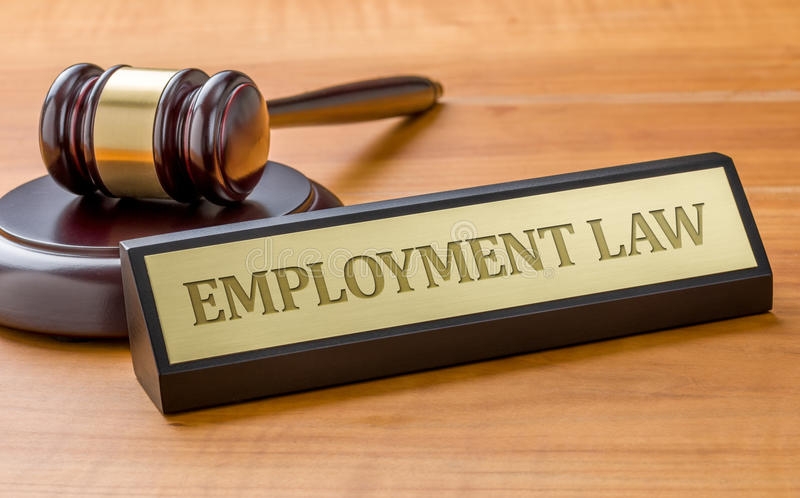An Employers Guide to Discrimination in the Workplace
July 01, 2021 | By: Becky Edwards
Discrimination in employment is a vast topic, and not one that can be examined in one article. What this article will seek to do is take a whistle-top tour through the topic, giving an overview of the legally defined forms of discrimination, how to recognise them, the impact a discrimination claim can have on your business, and a little bit about how Tribunals deal with those claims that end up in a hearing; not necessarily in that order though!
Impact
The highest sum awarded in any Tribunal between April 2019 to 31 March 2020 was £265,719. That was in a disability discrimination claim. The average award for disability discrimination claims was £27,043. The next highest in the same period was £243,636 for an age discrimination claim. The average award for age discrimination was £38,794. The number of sex discrimination claims have increased in the same period, with the average award increasing from £8,774 to £17,420 since 2018/19. The average award for race claims was £9,801, and for sexual orientation discrimination, the average was £27,936. Discrimination claims can cost a lot of money if the claimant succeeds.
A discrimination claim will impact your business in other ways. First there’s the allegation itself. Being accused of discriminating against a person is gut wrenching. It is especially difficult at a time when Black Lives Matter, #MeToo and LGBT movements are rightly campaigning for equal treatment. No-one wants to be accused of being racist, or sexist or of treating any person less favourably because they are different from us. An allegation of discrimination is deeply personal, and the effect on morale can sweep through a business.
Second, is the amount of time, and perhaps cost that defending a discrimination claim will take. The average wait time for all claims between an employment tribunal receiving a claim and it being heard was 323 days during the peak pandemic months of April-September 2020 – up from 284 days pre-Covid, so a claim can hang over the business for a long time. In that time, a defence must be drafted, all the documents relevant to the claim (letters, emails, policies, social media posts etc) have to be carefully scrutinised, witnesses need to be interviewed, long statements drafted, and then there’s the time in a hearing itself. Discrimination hearings typically take days, and having someone cross examine you, challenging your honesty and integrity, is a gruelling ordeal.
All told, a discrimination claim will take up many hours, days and sometimes weeks of your precious time, time that could be spent managing your business.
History
So how did we get here! The Equality Act 2010 is now the go-to legislation. Prior to that discrimination law developed in piece-meal fashion and could only be found by going to the specific legislation that related to the form of discrimination proscribed.
It is amazing how far we’ve come. The first ever race relations legislation was passed in 1965, and only applied to public places. In other words, you could be as discriminatory as you liked to a person of colour in a shop, and the Act failed utterly to tackle endemic housing discrimination. The Act was strengthened with further iterations in 1968 and 1976.
We had the first Sex Discrimination Act in 1975, the Disability Discrimination Act in 1995, the Employment Equality (Religion or Belief) Regulations and Employment Equality (Sexual Orientation) Regulations in 2003, and the Employment Equality (Age) Regulations in 2005. All of these separate pieces of legislation (and others) were finally reviewed and brought together in one Act, the Equality Act 2010, making it a lot easier to both access and interpret.
Of course, Parliament writes the law, but it’s the courts that are appointed to interpret those laws in the face of individual cases brought before them. As there are as many unique sets of facts as cases, our understanding of the law can evolve, and so we have in this country a body of caselaw that helps with that interpretation. Discrimination is widely held to be one of the most complex areas of law and for that reason it’s essential to get advice from a professional advisor if you find yourself facing a claim.
Forms of discrimination and prohibited conduct.
The Equality Act lists a number of characteristics that are protected from discrimination. They are age, disability, gender reassignment, marriage and civil partnership, pregnancy and maternity, race, religion or belief, sex and sexual orientation. If you treat anyone differently because of any of these characteristics you risk a claim of discrimination.
How though do you identify what amounts to discriminatory behaviour or conduct as the Act puts it? We’re helped with that by an outline of prohibited conducts. These are direct discrimination, indirect discrimination, harassment, victimisation, a very specific category of discrimination arising from disability, of which more later, and the Act places a duty on employers to make reasonable adjustments for people they know to have a disability. We’ll look at some of these in more detail.
Direct Discrimination as a concept is easier than some to understand. It occurs when one person treats another less favourably because of that person’s protected characteristic (one of those listed in the 1st paragraph of this section). For example, if a gay man (sexual orientation being the protected characteristic) walks into a bar and is told by the bar manager he is not being served because he is gay, that will be direct discrimination.
Indirect discrimination occurs if a person (or employer) applies a provision, criterion or practice (often called collectively a PCP) which has a disproportionate effect on a person because of their protected characteristic. An example would be the requirement that everyone must be a certain height to join an organisation. That requirement (or PCP) will have a disproportionate effect on woman (protected characteristic of sex) who want to apply to that organisation because woman are in the main smaller than men.
There are in fact three forms of harassment. General harassment i.e. conduct that violates a person’s dignity or creates an intimidating, hostile, degrading, humiliating or offensive environment, sexual harassment and less favourable treatment following harassment. The conduct will of course relate to a relevant protected characteristic. Pregnancy and maternity, and marriage and civil partnership are not directly protected. Conduct covers a wide range of behaviour, including spoken or written words or abuse, imagery, graffiti, physical gestures, facial expressions, mimicry, jokes, pranks, acts affecting a person’s surroundings or other physical behaviour. An example might be a male supervisor telling a female colleague, in front of her male counterparts, that her work is below standard and that, as a woman, she will never be competent to carry it out, and she’d be better staying at home to cook and clean for her husband. The supervisor’s conduct is unwanted and is related to her sex.
Victimisation was designed to help those who might be put off from raising a discrimination or harassment claim. It occurs in essence if a person is subjected to a detriment as a result of raising an issue under the Equality Act itself. The detriment can range from general hostility to dismissal. An interesting example can be found in the case of Kashmiri v Metropolitan Police Authority. An employee was falsely accused of eating cake during Ramadan. That allegation upset the employee because it challenged her integrity. The tribunal found that the person made the false allegation as a way of getting back at the colleague for naming her as a respondent in a race discrimination claim. That false allegation was found to be victimisation.
Disability arising from discrimination is a new form of disability protection. It makes it unlawful for an employer or other person to treat a disabled person unfavourably not because of that person’s disability itself (which would amount to direct discrimination) but because of something arising from, or in consequence of, the person’s disability. It has a wide effect. An example would be a person with severe depression (the disability and therefore a protected characteristic), receiving unpleasant treatment from their supervisor (the unfavourable treatment) because he or she had to take time off work (the time off work arose from their disability), because of their depression.
Failure to make a reasonable adjustment arises when a provision, criterion or practice (you’ll remember the PCP abbreviation from earlier) puts a disabled person at a substantial disadvantage when compared to a person who is not disabled, and that disadvantage is not addressed. The duty falls on the employer, and it is to take such steps as are reasonable to take in order to alleviate the substantial disadvantage to which the disabled person is put. An example might be failing to give a person with dyslexia extra time to complete reports.
As will be clear, discrimination is a complex tapestry of interwoven employee rights, and employer obligations. Understanding these is vital if you want to maximise your ability to protect your employees from discrimination and ensure your business does not find itself in the midst of a messy tribunal claim.
In the Tribunal
Any lawyer with experience of running discrimination claims for either a claimant or an employer will tell you the same thing. They are nearly impossible to predict. The best prepared defence can crumble as a witness faces the reality of questions in the witness box, and they often do. The Employment Appeal Tribunal has given clear guidance that assessing the evidence of the alleged discriminator when giving an explanation for any treatment involves an assessment not only of credibility but also of reliability, and involves testing the evidence by reference to objective facts and documents, possible motives and the overall probabilities. If you’re unlucky enough to appear in Tribunal you will be scrutinised.
A peculiarity of discrimination claims is the burden of proof. No-one stands up and says yes I discriminated against that person because of their colour, or sex or disability. Sometimes we don’t even recognise subtle forms of discrimination, and that we ourselves might have stumbled into discriminatory behaviour. The law recognises that, and understands that proving discrimination can be difficult. Part of the solution is what’s known as a sliding burden of proof. Put simply it works like this. Once there are facts from which an employment tribunal could decide that an unlawful act of discrimination has taken place, the burden of proof ‘shifts’ to the respondent to prove a non-discriminatory explanation. If the respondent can’t discharge that burden it loses!
The other part of the solution is the use of inferences. Tribunals will rely heavily on inferences that can be drawn from the surrounding facts, when seeking to determine whether a claimant has adduced sufficient facts to move the burden of proof to the respondent and have a wide discretion when making that judgement. Law is often seen as precise. Working out whether there has been discrimination or not is anything but, and that’s another reason why discrimination cases are difficult to predict. In practice therefore tribunals will look at evidence of the respondent’s conduct both before and after a complaint has been made. In Rihal v London Borough of Ealing for example, statistics were used to show that no person of colour held a senior management position in the Council. The tribunal was entitled to infer a culture of racial stereotyping that influenced, albeit unconsciously, management decisions. That was enough to shift the burden of proof to the respondent.
Conclusion
No-one wants to face a tribunal claim for discrimination. It’s worth remembering too that a person who feels that they have a genuine case of discrimination is hurting too, and perhaps with reason, and so the single best thing an employer can do, is to take this subject seriously.
Look at your organisation, not just in a cursory way to comply with the basics. Really look at it. What do you understand by discrimination? Do you believe it occurs? Is it even possible to admit that once upon a time you might have entertained attitudes that today you would not be proud of? Have those attitudes crept into your organisation? These are hard questions, but worth asking, because it’s only when we’re really honest with ourselves, that we can look at a topic with clarity.
With clarity we can help educate those within our organisations. We can open that conversation, look at training, breathe live into our equal opportunity and diversity policies, and commit to making our workplaces open and equal to everyone. That’s not too much to ask, is it?






